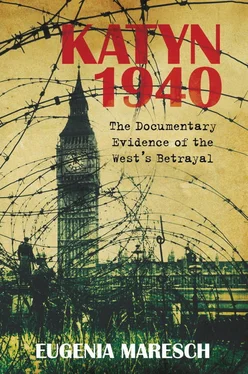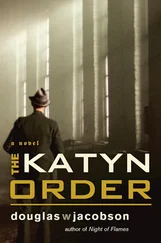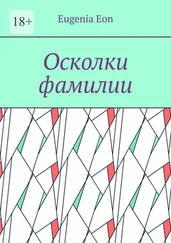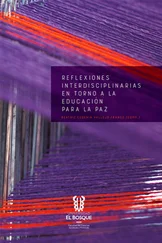Major Kenneth H. Duke, 1st Secretary of the East European Section of the Research Department, had been a member of the British War Crimes Executive in 1946 and head of the British team at Whaddon Hall cipher centre. He had helped the inquiry by collating the captured German documents, and even after 25 years he still considered them to be of some importance. He challenged Butler for lightly dismissing the conclusions of the Congressional Investigation Committee of 1952.
Different comments were expressed by Julian L. Bullard, son of Sir Reader Bullard, British wartime Ambassador in Teheran, who had witnessed the exodus of Poles from the USSR in 1942 with their tales of Russian brutality and disappearances. He was almost alone in the FO in supporting the indefatigable Ambassador O’Malley in his accusations against the Russians. ‘Not for reason of filial piety’ wrote Julian Bullard, did he disbelieve the Russians. He pointed out some peculiar factors in the Soviet report, such as its propagandistic, accusatory title. He flagged the unreliability of witnesses alleged to have seen the Germans extracting letters with dates after May 1940, or who claimed to have seen the Germans bringing lorry loads of corpses to Katyn at night. In spite of these serious and belated findings, young Bullard found nothing in Butler’s memorandum to suggest the need for revision of the long-standing official attitude of ’suspension of judgement’.
Anthony Royle, PUS (Permanent Under Secretary) read the report and reached the following conclusion. [5] TNA FCO 28/ 1946 ENP 10/1, Anthony Royle PUS on Butler’s memorandum, 20 October 1972.
1. Whilst responsibility of either nation for this dreadful massacre is not proven in the legal sense, it is clear that most distinguished and middle level officials in this office over the years ‘sense’ from both records or talks or involvement in some way that the Soviets were responsible – I am not convinced by the argument that the Germans are more likely to have done the deed because of their record of manslaughter. The Soviets deeds over the past 50 years may well equal or excel the Nazi record – nor am I convinced by letters/ documents on the corpses used as evidence because they date from 1941: the unchallenged evidence of no news after 1940 such as letters etc is interesting and tends to influence my view that the murders took place in 1940. Though in spite of these comments I am much impressed by Mr T. Brimelow’s view, Para 17.
2. If reasons of State and our alliance with Russia at the time had not been paramount – if we had no Foreign Policy influence bearing upon us – an impossible scenario! I feel certain that we would in 1945 and should now in 1972 put the finger of shame on the Soviet Union.’
On 1 November, the final, most critical comments on the Burdenko report came from Derek Tonkin [6] Derek Tonkin (b. 1929) studied modern languages including Polish, joined the FO in 1952, served mostly in the Far East and posted to Poland in 1955 and 1966. At the FCO in 1972 as Counsellor at PUS Department, representing it at the JIS, experienced in assessments, involved with Butler’s memoranda on Katyn and the memorial issue.
of the EE&SD. There is no record of how Butler reacted to these criticisms but in his amended and extended report of 10 April 1973, paragraph 65, Butler acknowledged Tonkin’s grave doubts about the validity of the Burdenko report.
By 13 November 1972, Julian Bullard submitted all appraisals of the memorandum to Rohan Butler, in anticipation of the final report. Tonkin, by now a Counsellor in the Permanent Under Secretary’s department, and a representative member at the JIS (Joint Intelligence Service), was producing ministerial weekly digests of intelligence as well as any special assessments that were needed; Burdenko’s report for Butler’s memorandum was one of them:
Katyn
1. In your submission of 16 October, you concluded that nothing in this memorandum by the Historical Adviser suggested to you that there was any need to revise or that there would be any advantage in revising our present and longstanding official attitude of suspension of judgement as regards the facts of the Katyn massacre.
2. I have recently been studying some of the original background material to Katyn, including the report by Mr Kazimierz Skarżynski, Secretary-General of the Polish Red Cross, who was compelled by the Germans to go to Katyn and who passed to us in the strictest confidence in 1946 his account of the two months stay of the Polish Red Cross representatives at Katyn. Although my studies have brought to my attention some very passionate and eloquent expressions of opinion, I do not consider that any of the events described in Mr Skarżynski’s report, or any of the other papers I have read, throw any new light on the circumstances of the Katyn massacre and those responsible.
3. I think however that I should record that I have been struck by several very evident inaccuracies and contradictions in the Soviet Report. I am not speaking here of the value of the scientific evidence (origin of the bullets, rope, age of the saplings, medical evidence etc) but of illogicality and errors of fact evident in the Soviet Report itself. It seems to me that a journalist of Mr Bernard Levin’s calibre would have little difficulty in making mincemeat out of the Soviet Report, if he cared to turn his mind to it. It may well be that Soviet awareness of the weakness of their case has made them so nervous.
4. In this minute, I would therefore like to do two things:
a. Firstly, to point to what appeared to me to be very evident weaknesses of logic in the Soviet Report.
b. To draw attention to the purely personal conclusions of Mr Skarżyński in his 1945 report [FO 371/ 56476] (N 5269/G of 1946) which have not hitherto been translated.
5. As regards the Soviet Report, the weaknesses of the Soviet case are I think best illustrated in the following four items. The quotations given are drawn directly from the Report.
a. ‘The total number of corpses as counted by the medico-legal experts was 11,000’. This is quite untrue. As the Report makes clear, the Soviet Commission in fact exhumed only 925 bodies. Even the Germans admitted recovering only about 4,300. ‘11,000’ is clearly a figure clutched at by the Soviet authorities to explain away the disappearance of this number of Polish Officers from the three camps at Kozelsk, Starobelsk, and Ostashkov.
b. The Polish war prisoners were housed in three special camps – camps Nos 1-ON, 2-ON and 3-ON, located 25 to 45 kilometres west of Smolensk” – these three camps, geographically, bear no relation at all to the three camps described in (a) above. Only Kozelsk was situated anywhere near Smolensk. The two other camps were hundreds of miles away. Nonetheless the Soviet Report would have us believe that these camps really existed. It is almost incredible that no one has ever appeared who had ever heard of these ‘ON’ camps; no letters were ever received or sent to them; no one has ever appeared who had ever been there; no actual place names are given to the camps. The indications, in short, are that they are completely fictitious.
c. ‘The Germans staged numerous round-ups of those war prisoners who had escaped from the camps’. – The Soviet Report admits that numerous PoWs escaped into the forests as the Germans overran Katyn. If we bear in mind that these were principally officers, desperately anxious to avoid capture; that the area was in a state of intense confusion; that the neighbouring forests offered ideal conditions for survival undetected; is it not incredible that not a single Pole appears to have remained at large?
d. ‘Of the documents discovered by the experts in forensic medicine, the following deserve special attention’. – The Soviet report makes much of the discovery of nine documents dating to the summer of 1941. If genuine, these documents would seem to indicate that the victims were still alive in late 1940, even 1941, when the Germans were in control of Katyn.
Читать дальше












